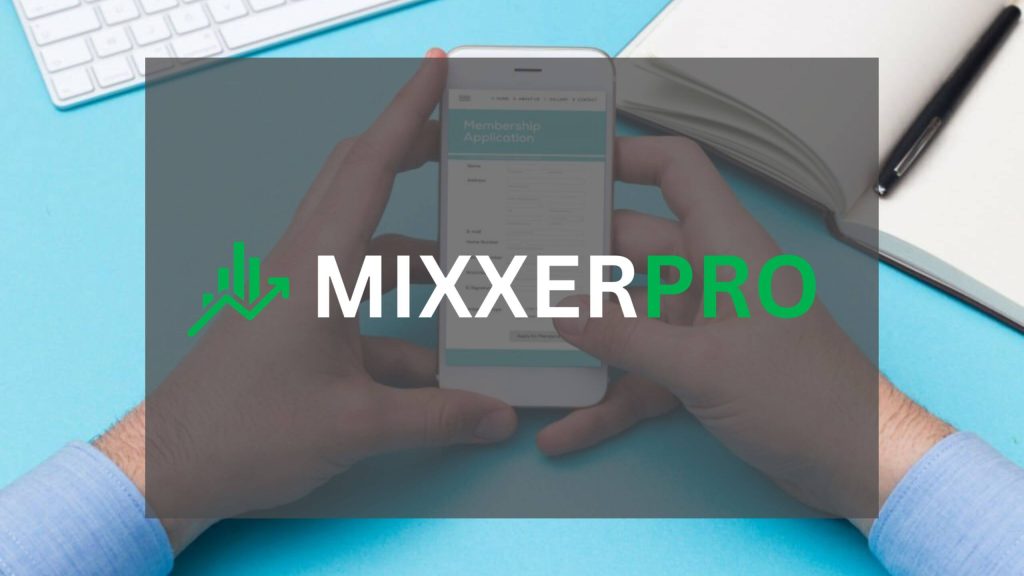How to Read an Invoice Like a Pro
To read an invoice, review the document for accuracy and check for important details like the invoice number, issued date, due date, items or services provided, and the total amount owed. This process will help ensure proper payment and avoid any potential errors or misunderstandings.
Invoices play a crucial role in the financial transactions of businesses, serving as a record of goods sold or services rendered. Being able to read an invoice accurately is essential for both buyers and sellers to maintain financial accountability and transparency.
Familiarizing yourself with the key components of an invoice will enable you to navigate through the document efficiently and effectively manage your financial responsibilities.
Table of Contents
Understanding The Basics Of Invoices
Invoices can be complex, but understanding how to read them is crucial for business owners. By analyzing the key components such as billing details, itemized charges, and payment terms, you can gain a comprehensive understanding of your financial transactions.
| Key Elements of an Invoice | Different Types of Invoices | Importance of Accurately Reading Invoices |
| An invoice typically includes essential details such as the invoice number, date, contact information of the buyer and seller, a detailed description of the products or services provided, quantity, unit price, and the total amount due. | Different types of invoices include commercial invoices, pro forma invoices, time-based invoices, and recurring invoices. The specific type of invoice depends on the business and transaction requirements. | Accurately reading invoices is crucial for proper financial management. By understanding the details presented in an invoice, businesses can ensure accurate tracking of expenses, identify discrepancies, and maintain a healthy cash flow. This helps in avoiding errors resolving disputes, and building strong relationships with clients or vendors. |
Decoding Invoice Terminology
Decoding Invoice Terminology can be a daunting task for many individuals. However, understanding the key elements such as the invoice date and number, seller and buyer information, payment terms and conditions, an itemized list of products or services, subtotal, taxes, and additional charges, and the total amount due is essential for reading an invoice accurately.
Analyzing Invoice Details For Accuracy
Analyzing an invoice in detail is essential to ensure accuracy and avoid any discrepancies. Start by verifying the invoice date and number to match the transaction records. Next, it is important to check the seller and buyer information, making sure they match the agreed terms. Scrutinize the payment terms and conditions, ensuring they align with the agreed-upon terms. Review the itemized list of products or services provided and ensure they match the agreed quantity and pricing. Calculate the subtotal, taxes, and any additional charges accurately. Finally, confirm the total amount due to make sure it reconciles with the provided details.
Advanced Techniques For Interpreting Invoices
Understanding different billing terminology can be crucial when trying to read and comprehend invoices. Familiarize yourself with common terms such as “net amount due,” “terms,” and “due date” to gain a better understanding of the overall invoice. Pay close attention to details and be meticulous in recognizing common invoice errors that may affect your payments. These errors might include incorrect pricing, missing items, or inaccurate calculations. Spotting discrepancies and inconsistencies is another essential skill. Review invoices thoroughly, comparing each line item to ensure accuracy. Keep an eye out for hidden costs or fees that may be buried within the invoice. These might include shipping charges, taxes, or added services. By being attentive and thorough, you can confidently navigate through invoices and ensure proper accounting practices.
Evaluating Payment Terms And Conditions
When reviewing an invoice, it is crucial to analyze the credit terms and due dates mentioned. Pay attention to the specific period within which the payment must be made. These terms could vary from invoice to invoice, with some offering 30 days, while others may require immediate payment upon receipt of the invoice. Understanding the due dates will help you plan your payment schedule effectively.
Another important aspect to evaluate is the late payment penalties and discounts mentioned in the invoice. Many invoices include details about any penalties that will be imposed in the event of late payment. On the other hand, some invoices may offer early payment discounts, which can save you money. Be sure to take note of these incentives to make informed decisions about payment timing.
| Payment Method | Description |
| Credit Card | Payment can be made using a credit card. |
| Bank Transfer | Payment can be made through a bank transfer. |
| Check | Payment can be made by writing a check. |
| Online Payment Platforms | Payment can be made using online payment platforms like PayPal. |
It is important to review the accepted payment methods mentioned on the invoice. This ensures that you are aware of the available options for making payments. Familiarize yourself with the methods listed and choose the one that is most convenient and secure for you.
Spotting Red Flags In Invoices
To effectively spot red flags in invoices, it is important to pay attention to incorrect or missing information, pricing discrepancies, and potential fraudulent activity. Incorrect or missing information can include errors in contact details, invoice numbers, or dates. These issues should be brought to the attention of the invoicing party to ensure accurate record-keeping. Pricing discrepancies can be identified by comparing the invoice to any agreed-upon pricing or contracts. If there are significant differences, it may indicate a mistake or potential overcharging. In some cases, fraudulent invoices or scams may be attempted by individuals posing as legitimate businesses. To avoid falling victim to these fraudulent activities, it is essential to verify the authenticity of the invoice, cross-check with existing records, and maintain communication with verified contacts. By being vigilant and attentive, it is possible to confidently identify and address any red flags that may arise in the invoicing process.
Tips For Efficiently Managing Invoices
Efficiently managing invoices is a crucial aspect of running a successful business. One helpful tip for achieving this is to organize and maintain a centralized invoice system. This ensures all invoices are easily accessible and reduces the chances of losing important paperwork. Additionally, streamlining invoice processing procedures can significantly improve efficiency. This involves setting clear guidelines for invoice submission, reviewing invoices promptly, and promptly resolving any discrepancies. Leveraging technology can also greatly enhance invoice management. Utilizing accounting software or online invoicing platforms can automate tasks such as sending reminders, tracking payments, and generating reports. Lastly, it is essential to set up reminders for payment due dates. This helps avoid late payments, improves cash flow, and strengthens relationships with vendors. By following these tips, businesses can effectively manage their invoices, avoid errors, and reduce administrative burdens.

| Tip for Efficiently Managing Invoices |
| Organize and maintain a centralized invoice system |
| Streamline invoice processing procedures |
| Leverage technology for invoice management |
| Set up reminders for payment due dates |
Implementing Best Practices For Invoice Management
Implementing best practices for invoice management is crucial for businesses looking to streamline their financial operations. Clear invoice approval workflows should be established to ensure that invoices are processed and paid promptly. This includes defining the appropriate stakeholders involved in the approval process and setting clear guidelines for their roles and responsibilities.
Effective communication with vendors or suppliers is essential to avoid any delays or misunderstandings. Timely communication can help resolve any issues or discrepancies that may arise, ensuring accurate and prompt payment.
Tracking and resolving invoice discrepancies promptly is another important aspect of efficient invoice management. Regularly reconciling invoices with purchase orders or receipts can help identify any discrepancies and take necessary actions to resolve them as soon as possible.
Adopting automation tools for invoicing can greatly improve efficiency and accuracy. Automating invoice processing and payment can help reduce manual errors and ensure that invoices are processed promptly. These tools can also provide real-time insights and reporting, allowing businesses to better track and manage their invoice workflows.
Maximizing Roi Through Invoice Analysis
Maximizing ROI through Invoice Analysis involves gathering data from invoices for financial analysis, identifying cost-saving opportunities and negotiation leverage, and using invoice analytics for forecasting and budgeting.
Frequently Asked Questions On How To Read An Invoice
What Do The Numbers On An Invoice Mean?
The numbers on an invoice represent important information such as the invoice number, date, and total amount due. They help identify and track specific invoices for record-keeping and payment purposes.
How Do You Read A Sales Invoice?
To read a sales invoice, look for essential details like the seller’s name, buyer’s information, invoice number, date, and terms of payment. Check for the description, quantity, and price of items purchased. Calculate the total amount due, including taxes and any discounts.
Verify the invoice for accuracy and keep it for record-keeping purposes.
What Is The Format Of An Invoice?
An invoice typically consists of information such as the sender’s and recipient’s contact details, invoice number, date of issue, description and quantity of goods or services, unit price, total amount owed, and payment terms. It is important to include all necessary details to ensure transparent and accurate transactions.
What Is An Example Of Invoice Terms?
Invoice terms refer to the agreed-upon conditions for payment between a buyer and seller. For example, “Net 30” means the buyer has 30 days to pay the invoice, whereas “Due on receipt” requires immediate payment upon receipt of the invoice.
Conclusion
Understanding how to read an invoice is essential for managing your finances effectively. By following these simple steps and familiarizing yourself with the different components of an invoice, you can ensure accuracy in your transactions, prevent errors, and maintain a healthy financial record.
With this knowledge, you will be better equipped to track your expenses, make informed decisions, and cultivate strong relationships with your business partners. So, don’t underestimate the importance of invoice reading skills, as they can greatly contribute to your overall financial success.




